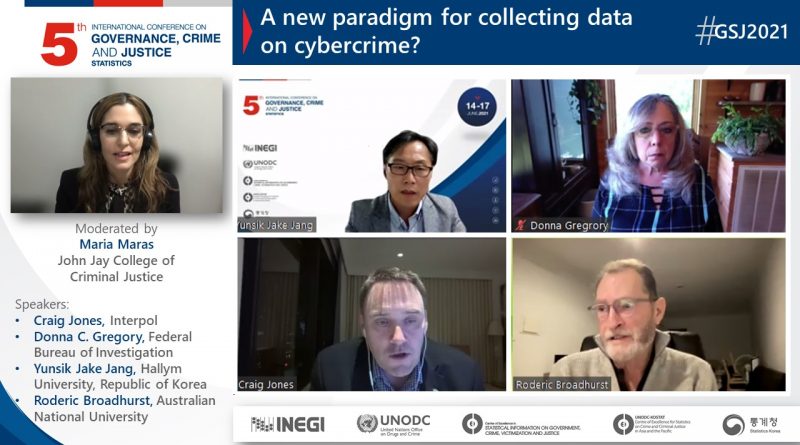Better Statistics on Crime, Drugs and Cybercrime for Decision Making: Day 3 of the GSJ2021
Mexico City, June 16, 2021. During the third day of the 5th International Conference on Governance, Crime and Justice Statistics (GSJ2021), the sessions focused on how to improve statistics on traditional crime, cybercrime, violence in cities and on drugs.
The first session Crime Statistics for Evidence Based-Policy Making focused on the standardization in crime data collection regarding the characteristics of victims, perpetrators and the improvement of information systems. From this perspective, the technical challenge of collecting, processing useful and quality information, and standardizing data and measurements was evidenced. To understand these challenges, the adoption of the International Classification of Crimes for Statistical Purposes ICCS in South Korea in 2015 was presented, a process that still continues to present significant changes to generate comparable statistics to improve the measurement of SDG (Sustainable Development Goal) 16: Peace, justice and Strong Institutions with quality sources.
The second session A new paradigm for collecting data on cybercrime? addressed the measurement, analysis and prevention of cybercrime and its challenges. Presentations from a global and national perspective discussed the classification of cybercrimes. The impact of COVID-19 pandemic was with no doubt a determining factor that accelerated the dynamics and uses of technology. Likewise, challenges such as the diversity of information and the limited access to it, impacts on the design and implementation of public policies, as well as on cooperation strategies to share data in an agile way to increase the level of reliability for evidence-based decision making to combat cybercrime.
During the third session Research and statistics for reducing crime and violence in cities, the need to implement the use of criminal information data from multiple systems to build evidence to design differentiated public policies for crime prevention was discussed. Also, the challenge of ensuring the effectiveness of prevention policies was mentioned, through analyzing the location of implementation, the magnitude and the effect on the territory. The need to implement a risk assessment based on reports was highlighted, as well as the resources to detect characteristics of the damages to victims, according to their patterns, networks and location.
During the fourth and final session Drug statistics: drug trafficking and COVID-19, global and regional studies regarding drug markets were presented, pointing out the impact of COVID-19 on the supply chains of illicit substances. The study at the European level showed that the drug market is a resilient market, by adapting to changes posed by external factors that affected its dynamics, since technology modified its demand and means of transport. At a global level, it was pointed out that due to the population mobility reduction due to curfews, confinement and closing of commercial establishments, drug trafficking by air was reduced too. Specifically, in the cocaine market, there is a reduction in prices due to hoarding, thus the opportunities were reduced and the risks were increased. However, the market adapted and managed to reestablish itself by transporting drugs through sea, private aircrafts and through perishable products from origin to destination; in addition, the innovative use of technology has led to consumption through home deliveries. It was mentioned that the market will possibly return to its pre-pandemic dynamics.
The activities of the 5th International Conference on Governance, Crime and Justice Statistics will continue until tomorrow 17 June, with sessions on measuring corruption, illegal governance and the impact of COVID-19 on domestic violence.



